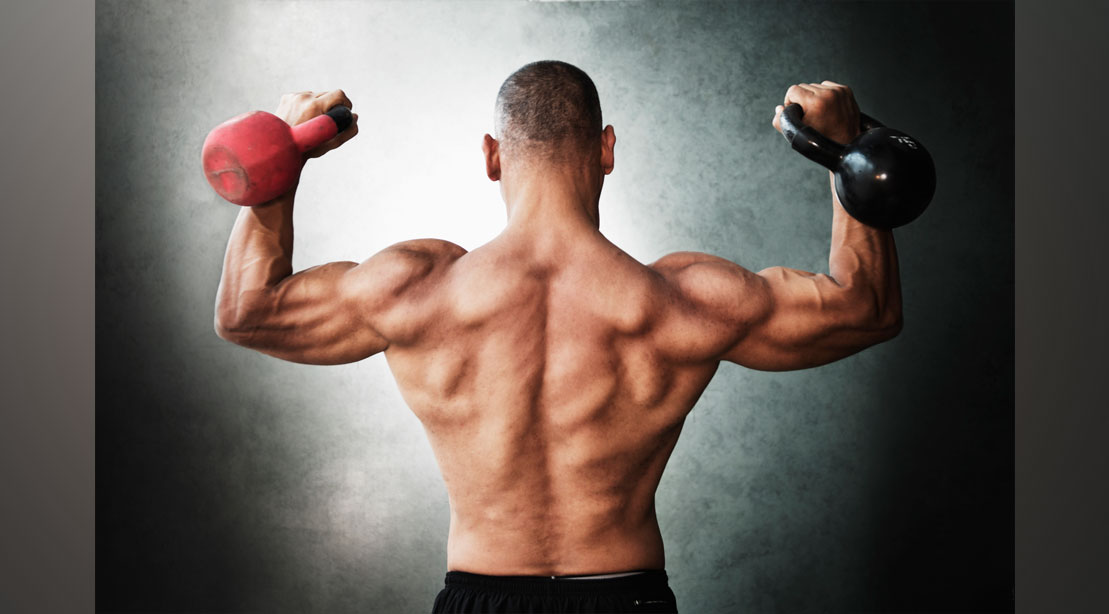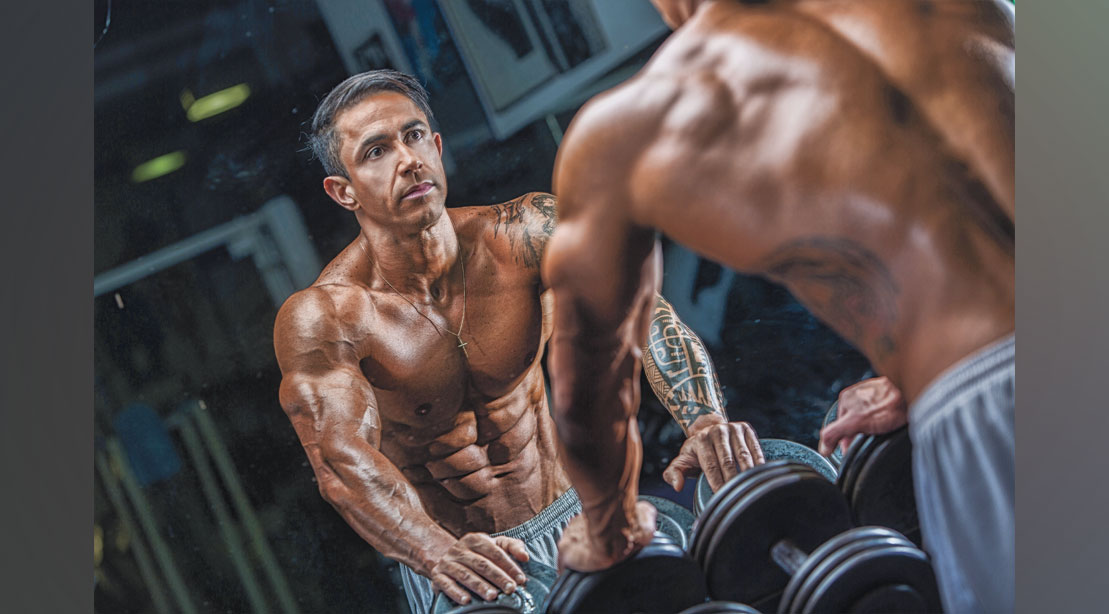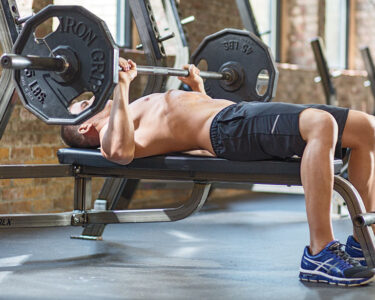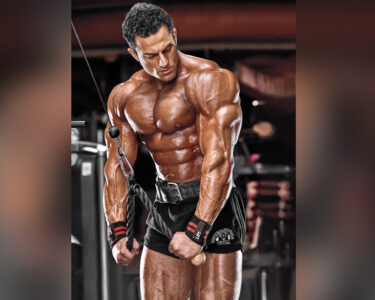Francisco Rocha was born in Salvador, Brazil, but now lives in London. He began boxing in his teens and then moved into bodybuilding. At 38, Rocha says his physique looks better than ever. “The key moment came five years ago when I competed for the first time,” he says. “I had moved to the U.K. and wanted to see how far I could push my body. I tried classic bodybuilding, but my best result was third. Then I tried men’s physique and won the London and South-East Championships. I’ve won eight competitions.”
Two years ago, Rocha won the British masters division, which is reserved for competitors age 35 and over. “This year I thought it would be fun to see how I could do in the open category against younger guys. So far I’ve won two shows. I think I will look better at 40 than I did at 20.” Here’s how he has made it happen, in his own words.
10 Tips to Train Smarter for Bigger, Better Gains
Close gallery popup button
1 OF 10

Train for Longevity
“Don’t lift with your ego” is a cliche?, but it’s perhaps the greatest lesson I’ve learned. I have managed to avoid serious injuries for the past 10 years, which is not something many guys in their late 30s can say. I believe this is mainly because I don’t go too heavy. Your muscles do not recognize numbers on plates. It’s all about time under tension. So if you want to keep improving with age, don’t just keep increasing the load. It’s far better to increase the intensity of your training by doing different techniques, such as trisets, giant sets, dropsets, peak contraction, and pre-exhaustion. Strict form and full range of movement on every rep also help prevent injury.

Don’t Make Excuses
Many people say it’s easy for me to stay in shape because I’m a personal trainer and I “spend all day in the gym.” What they don’t realize is that I’ve been going to the gym since I was 16, long before I started working in one. I got a degree in business management, a master’s in marketing, and I spent 12 years doing an office job. I was a financial manager at a construction company. So I know how to fit in workouts and manage my diet around a 9-to-5 life.

Don’t Be Chest Obsessed
When I started training, I smashed my pecs twice a week because I thought a big chest was impressive. My first chest session was always at the start of the week, on Monday, when I was fresh. Over time my physique became too chest-dominant.Now I train chest only once a week but with very high volume to keep it full, and I concentrate more on improving my weak points.

Cover Your Back
Over the years I’ve become more aware of the impact of a well-built back. As with many guys, when I started training, I prioritized my chest and also went crazy on my arms and shoulders. But I didn’t think too much about my back, perhaps because I couldn’t see it in the mirror. This was foolish, though. A good back really stands out. It’s a large muscle group that isn’t easy to train. You need to plan workouts that hit it from every angle to develop width and thickness—things like pullups, seated cable rows, dumbbell rows, lat pulldowns, and deadlifts.

Raise Your Shoulder Game
Most guys start their shoulder routines with a press, perhaps because they can go heavier on this big compound move when they’re fresh. Try starting with some raises instead. Do front-, side-, and rear-delt raises. And don’t just do dumbbell lateral raises for side delts—throw in some cable machine side raises, too, and perhaps superset them with narrow-grip upright rows for front delts. Do some isometric work for your front delts as well, using the rope on the cable machine. Save presses for the end of your workout. You won’t be able to lift as heavy, but after a few weeks of pre-exhausting them, you should notice them growing.

Get to the Core
Being a men’s physique competitor, where the shoulder-to-waist differential is crucial, I have learned to stay away from weighted abs exercises. I see guys holding 45-pound plates while doing torso rotations, and sure, it’s impressive and builds thick abs—but it also thickens the waist, which makes it harder to get that V-taper. So I do something that’s totally boring instead: I train core. I do planks, side planks, and hanging leg raises. They’re tedious, but they’ve helped me reduce my waist onstage.

Use Fasted Cardio
Everyone argues about whether cardio is more effective fasted or unfasted. I’ve tried doing it?at various times in the day, including straight after weights or last thing in the evening. For me, fasted cardio yields the best results. Some people complain they don’t have enough time to do cardio first thing in the morning, but if I have an early-morning client I’m prepared to do it at 4 a.m. It all comes down to how badly you want it.

Don’t Neglect Supps
It’s often said that solid food is better than supplements, and I don’t disagree. But I’ll be honest: I really don’t like eating clean. And when I’m trying to get lean, my food is plain and boring—as it should be. Sometimes I struggle to eat, so I rely a lot on supplements. Some people might say I rely on them too much, but my approach seems to be working well so far. I take supplements for almost everything my body needs, from basic protein powders and essential fatty acids to highly specific formulas for micronutrients.

Become Your Own Guru
If you earn a fortune, there’s nothing wrong with paying a coach to train you three to four times a week and send you detailed diet plans. It’s nice when all you have to worry about is showing up at the gym. But most people can’t afford this. The good news is that they can achieve the same results by educating themselves. Read, learn, research, and discuss. Over time, you will gain knowledge, and knowledge is power. The fact that you are reading this magazine is a good sign.

Give Your Program Time
There is so much talk about varying your workouts these days and so much impatience for results. As a result, many people don’t allow enough time to assess the results of their program. It’s pointless trying something new for two weeks and then saying it doesn’t work. In bodybuilding, everything is about consistency.
Back to intro
Train for Longevity
“Don’t lift with your ego” is a cliche?, but it’s perhaps the greatest lesson I’ve learned. I have managed to avoid serious injuries for the past 10 years, which is not something many guys in their late 30s can say. I believe this is mainly because I don’t go too heavy. Your muscles do not recognize numbers on plates. It’s all about time under tension. So if you want to keep improving with age, don’t just keep increasing the load. It’s far better to increase the intensity of your training by doing different techniques, such as trisets, giant sets, dropsets, peak contraction, and pre-exhaustion. Strict form and full range of movement on every rep also help prevent injury.
Don’t Make Excuses
Many people say it’s easy for me to stay in shape because I’m a personal trainer and I “spend all day in the gym.” What they don’t realize is that I’ve been going to the gym since I was 16, long before I started working in one. I got a degree in business management, a master’s in marketing, and I spent 12 years doing an office job. I was a financial manager at a construction company. So I know how to fit in workouts and manage my diet around a 9-to-5 life.
Don’t Be Chest Obsessed
When I started training, I smashed my pecs twice a week because I thought a big chest was impressive. My first chest session was always at the start of the week, on Monday, when I was fresh. Over time my physique became too chest-dominant.
Now I train chest only once a week but with very high volume to keep it full, and I concentrate more on improving my weak points.
Cover Your Back
Over the years I’ve become more aware of the impact of a well-built back. As with many guys, when I started training, I prioritized my chest and also went crazy on my arms and shoulders. But I didn’t think too much about my back, perhaps because I couldn’t see it in the mirror. This was foolish, though. A good back really stands out. It’s a large muscle group that isn’t easy to train. You need to plan workouts that hit it from every angle to develop width and thickness—things like pullups, seated cable rows, dumbbell rows, lat pulldowns, and deadlifts.
Raise Your Shoulder Game
Most guys start their shoulder routines with a press, perhaps because they can go heavier on this big compound move when they’re fresh. Try starting with some raises instead. Do front-, side-, and rear-delt raises. And don’t just do dumbbell lateral raises for side delts—throw in some cable machine side raises, too, and perhaps superset them with narrow-grip upright rows for front delts. Do some isometric work for your front delts as well, using the rope on the cable machine. Save presses for the end of your workout. You won’t be able to lift as heavy, but after a few weeks of pre-exhausting them, you should notice them growing.
Get to the Core
Being a men’s physique competitor, where the shoulder-to-waist differential is crucial, I have learned to stay away from weighted abs exercises. I see guys holding 45-pound plates while doing torso rotations, and sure, it’s impressive and builds thick abs—but it also thickens the waist, which makes it harder to get that V-taper. So I do something that’s totally boring instead: I train core. I do planks, side planks, and hanging leg raises. They’re tedious, but they’ve helped me reduce my waist onstage.
Use Fasted Cardio
Everyone argues about whether cardio is more effective fasted or unfasted. I’ve tried doing it?at various times in the day, including straight after weights or last thing in the evening. For me, fasted cardio yields the best results. Some people complain they don’t have enough time to do cardio first thing in the morning, but if I have an early-morning client I’m prepared to do it at 4 a.m. It all comes down to how badly you want it.
Don’t Neglect Supps
It’s often said that solid food is better than supplements, and I don’t disagree. But I’ll be honest: I really don’t like eating clean. And when I’m trying to get lean, my food is plain and boring—as it should be. Sometimes I struggle to eat, so I rely a lot on supplements. Some people might say I rely on them too much, but my approach seems to be working well so far. I take supplements for almost everything my body needs, from basic protein powders and essential fatty acids to highly specific formulas for micronutrients.
Become Your Own Guru
If you earn a fortune, there’s nothing wrong with paying a coach to train you three to four times a week and send you detailed diet plans. It’s nice when all you have to worry about is showing up at the gym. But most people can’t afford this. The good news is that they can achieve the same results by educating themselves. Read, learn, research, and discuss. Over time, you will gain knowledge, and knowledge is power. The fact that you are reading this magazine is a good sign.
Give Your Program Time
There is so much talk about varying your workouts these days and so much impatience for results. As a result, many people don’t allow enough time to assess the results of their program. It’s pointless trying something new for two weeks and then saying it doesn’t work. In bodybuilding, everything is about consistency.





